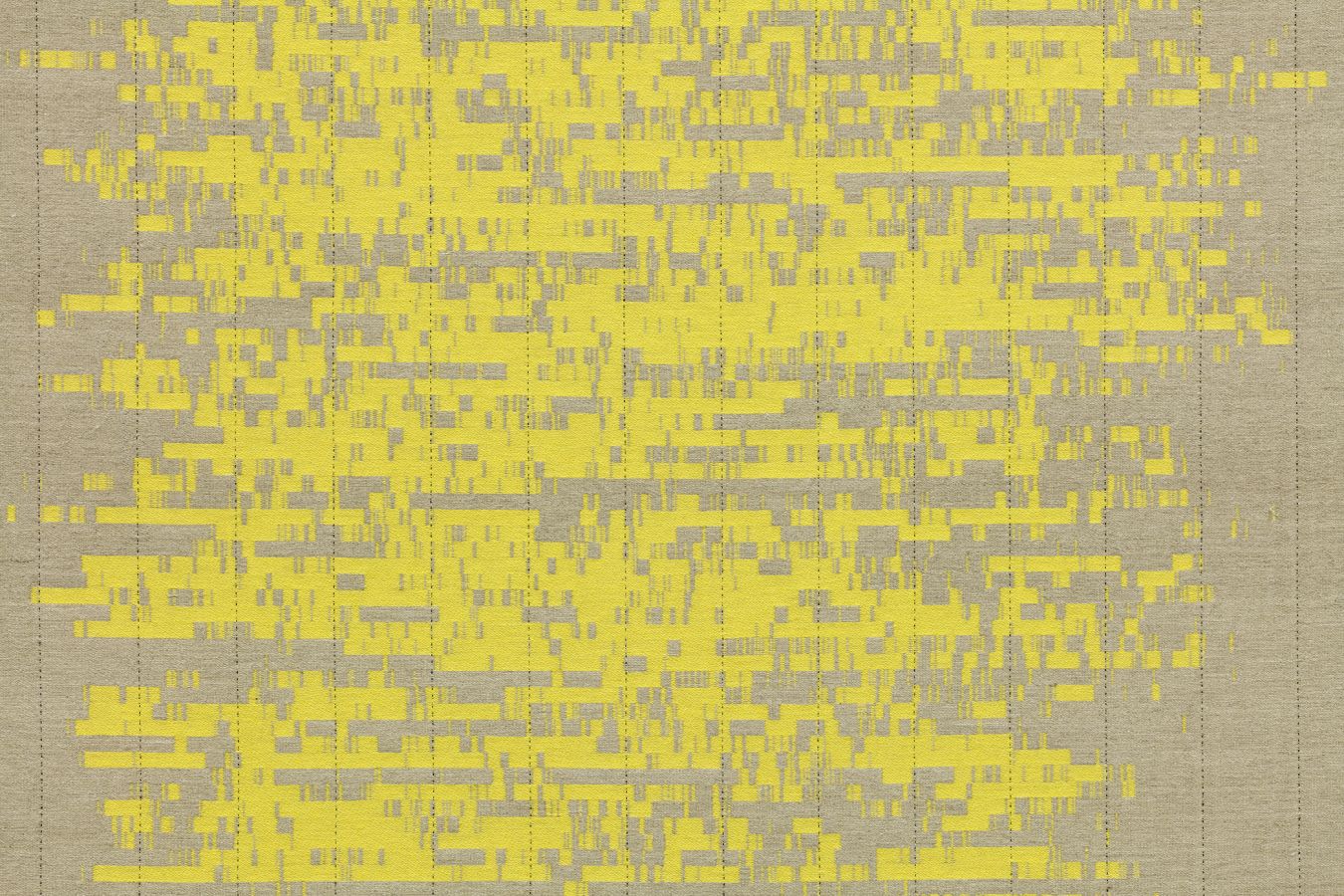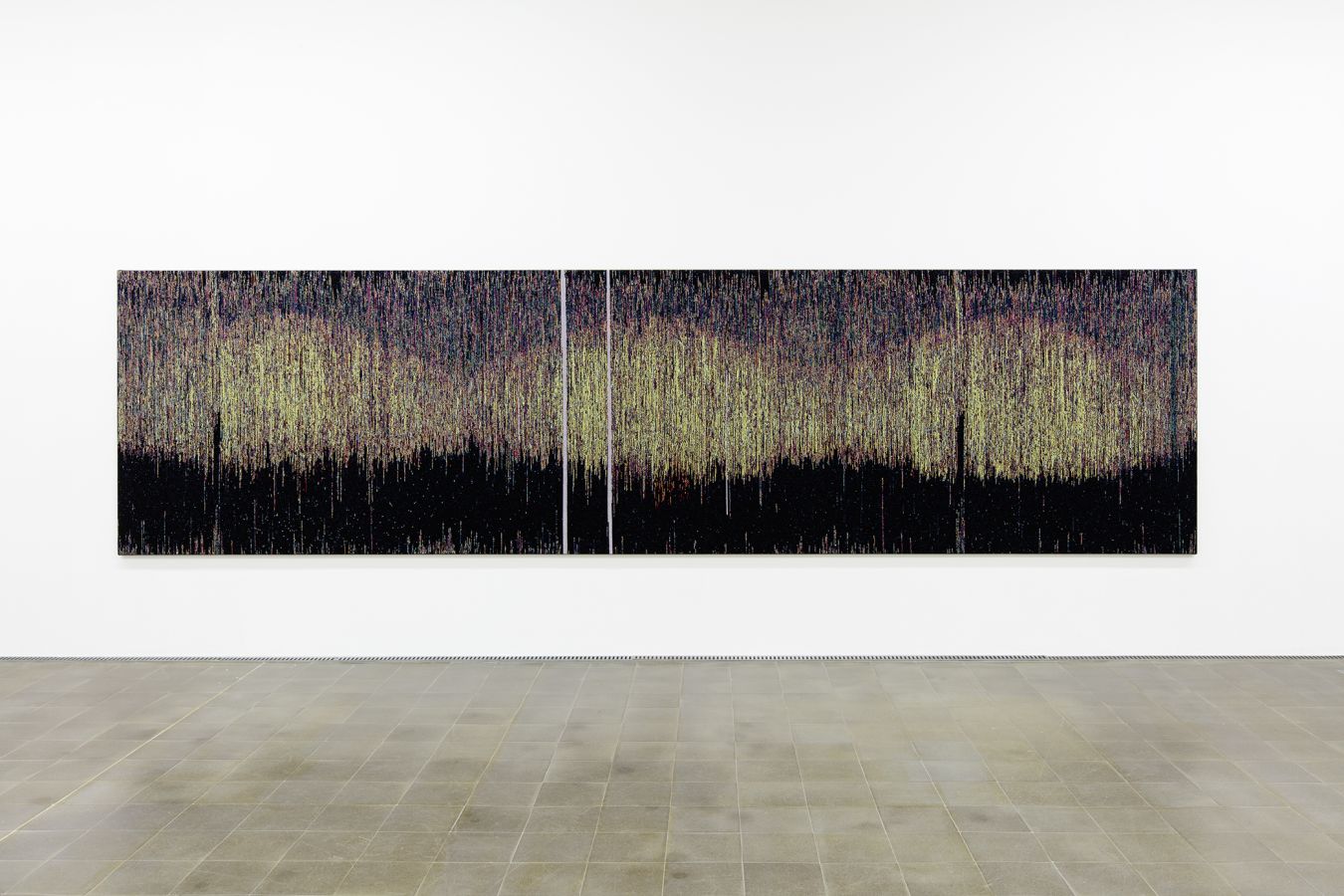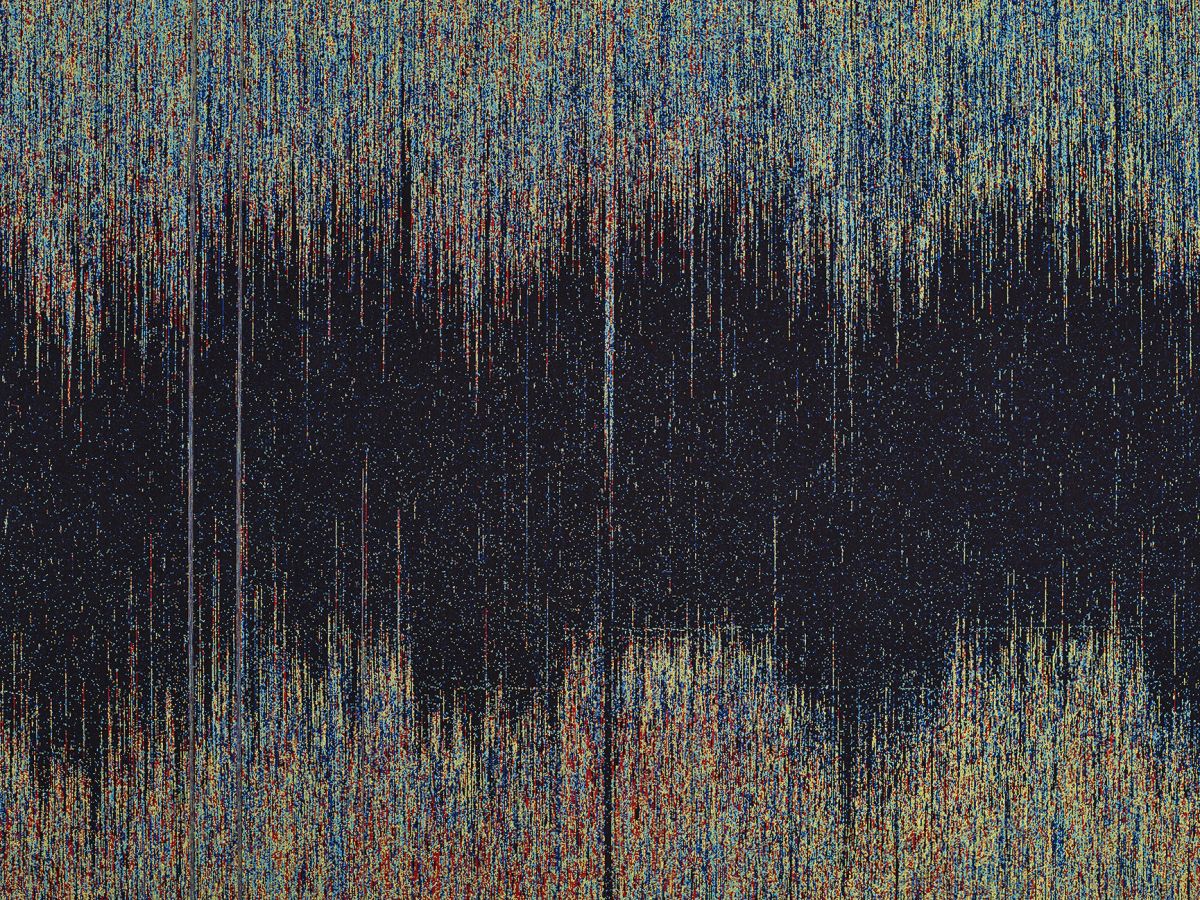Susan Morris
Series of three artworks:
Binary Tapestry (Sunshine)
Activity and Light 2010-2012 (Tilburg Version)
Sleep/Wake 2010-2014 (MLS Version)
The body has an uneasy relation to the artificial systems of clock and calendrical time that structure our days. Susan Morris is interested in ways in which the individual subject falls in and out of sync with these systems. Between 2004 and 2014, the artist recorded her sleep-wake patterns using an Actiwatch – a wrist-worn recording device used by chronobiologists – initially making small, diaristic, ink-jet prints out of the data but eventually developing the work into large Jacquard tapestries generated directly out of these long-term datasets. Her work reveals a body very much embedded in routines typical to an individual living in a Northern European city during a period of late capitalism, but also a body that frequently went its own unruly way.
Historically, the Jacquard loom was the first invention to mechanise labour, thus bringing into the workplace machines that could work faster and for longer than any human individual. As a consequence, labourers were organised to become more machine-like. Other externally imposed changes, such as the shift to and from Daylight Saving Time, also have an impact on the body. In the few weeks following this switch in spring, for example, individuals are more likely to feel depressed, have a traffic accident or make mistakes at work.
The Actiwatch also recorded ambient light, both natural and artificial, and the tapestries show that, due to the existence of artificial lighting, alongside high levels of light pollution in the city, less than a third of the artist’s time was spent in the privacy of darkness, where she might get sufficient sleep, vital to our health and our sense of self.
These pieces are part of a series developed within a 10-year partnership with Russell Foster, Professor of Circadian Neuroscience, University of Oxford.

Images courtesy of Bartha Contemporary, London. Photos: Stefan Rohner, Steve White & Co.
Binary Tapestry (Sunshine)
2016
Jacquard tapestry: linen and cotton yarn, 366 x 145 cm.
Courtesy of Bartha Contemporary, London.
Binary Tapestry (Sunshine) rrecords the amount of light (natural and artificial) that the artist was exposed to over the course of 2012. It shows each minute of the year running across and down from left to right.
The 366 days of the year (2012 was a leap year) also run in horizontal lines down the tapestry, with each day allocated a height of 1 cm – thus dictating the overall height of the piece which echoes that of the window in the gallery space for which this piece was initially made, which itself echoed the proportions of the Actigraph produced by the Actiwatch software. The width of the piece was decided upon using the same logic. Starting at the top left-hand corner at 00:00 hours on 1 January, the year ends at the bottom right-hand corner, at midnight on 31 December. Black lines, travelling vertically down the length of the piece and made by pulling the warp thread to the surface of the tapestry, separate the hours.
The piece is made from raw linen and a single cotton yarn of bright yellow to give the impression of paint on canvas. Morris’s tapestries are not hand-made; recorded data is converted directly into coloured thread and woven automatically on a Jacquard loom – one of the first binary systems and as such a precursor of the computer.

Images courtesy of Bartha Contemporary, London. Photos: Stefan Rohner, Steve White & Co.
Activity and Light 2010-2012 (Tilburg Version)
2014
Jacquard tapestry: silk and linen yarn, 155 x 589 cm.
Courtesy of Fondation Collection Centre d’art Pasquart, Biel.
SunDial:NightWatch_Activity and Light 2010-2012 (Tilburg Version) records the artist’s sleep-wake patterns over a period of three years, alongside the amount of ambient light (natural and artificial) that she was exposed to during that time, collected with an Actiwatch.
The recording begins at the bottom left-hand corner of the tapestry at 00:00 hours on 1 January 2010, and ends at at the top right-hand corner at 00:00 hours on 31 December 2012. Time thus moves horizontally across the piece in a kind of coiling motion. Night occupies the bottom third of the tapestry, with artificially-lit evenings along the top section. Midday runs across the centre of the piece. There were 1,096 days in the three-year recording period. These go vertically from left to right across the tapestry, with the two concurrent data streams for each individual day shown side by side.
The colours indicate degrees of intensity of light, on a gradient from black (for low or no light) through various blues to light turquoise. Activity is represented on a gradient from black through orange and purple to the red yarn that indicates maximum activity. The seasons emerge clearly over the three-year period, with the long daylength in the summers diminishing in the winter months. The artist also travelled across time zones on two occasions in spring, which is clearly seen in the first and third year.

Images courtesy of Bartha Contemporary, London. Photos: Stefan Rohner, Steve White & Co.
Sleep/Wake 2010-2014 (MLS Version)
2015
Jacquard tapestry: silk and cotton yarn.
134 x 178.5 cm
Courtesy Bartha Contemporary, London.
SunDial:NightWatch_Sleep/Wake 2010-2014 (MLS Version) records Morris’s sleep-wake patterns over a period of five years. Values were recorded for 1,440 minutes of each day; one ‘shot’ of weft thread was used for each minute, thus conveying both time ‘flashing by’ and the Jacquard process itself, with the single weft yarn flicking through, up and down, across the warp.
Following the conventions of the chronobiologists the artist was working with, night is configured down the centre of the tapestry, with mornings along the bottom third of the piece. The artist travelled across time zones three times over the five-year period. Most striking of all, are the shifts to and from Daylight Saving Time, clearly apparent in the way the data steps up and down five times.
Finally, in the tiny rows of blue yarn, showing a minute’s worth of activity each morning at the same time, you can see when the artist moved her hand suddenly as her alarm clock went off.
Here the artist used a silk yarn, which is much finer than cotton or linen so, given that the thickness of the yarn dictates the height of the piece, the tapestry that records the greatest length of time is smaller than those that record a shorter duration but that were made with thicker thread. Making recordings for long time periods draws attention to repetitive rhythms and activities that often extend beyond a single year. Therefore, this piece acts as a diary of an individual living in a northern European city, governed by clock and calendrical time, where we all wake up at a similar time and extend the working day with artificial lighting.